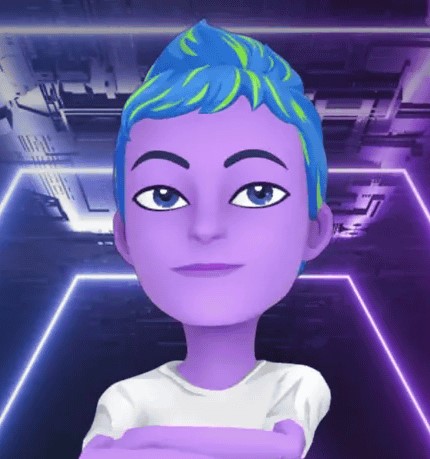Introduction
Snapchat is one of the most popular social media apps in the world, with over 300 million daily active users. But what makes Snapchat so fun and engaging is not just its ephemeral messages and stories, but also its artificial intelligence (AI) technology. Snapchat AI is the driving force behind the app’s innovative features and filters, such as lenses, bitmojis, snap maps, and more. In this article, we will explore what Snapchat AI is, how it works, and why it matters.
What is Snapchat AI?
Snapchat AI is the term used to describe the various machine learning algorithms and models that power the app’s functionality and user experience. Machine learning is a branch of AI that enables computers to learn from data and perform tasks without explicit programming. Snapchat AI uses machine learning to analyze and understand the content and context of the user’s snaps, such as faces, objects, scenes, emotions, locations, etc. Based on this analysis, Snapchat AI can then generate personalized and relevant suggestions and effects for the user, such as filters, stickers, captions, music, etc.
How does Snapchat AI work?
Snapchat AI works by using a combination of different machine learning techniques and tools, such as computer vision, natural language processing, speech recognition, recommendation systems, etc. Here are some examples of how Snapchat AI works for some of the app’s features:
- Lenses: Lenses are one of the most popular features of Snapchat, which allow users to transform their appearance or environment with various effects and animations. Lenses use computer vision to detect and track the user’s face and facial features in real-time. Then, they use deep neural networks to apply realistic and interactive overlays on the user’s face or background. For example, a lens can make the user look like a dog, a baby, or a celebrity.
- Bitmojis: Bitmojis are personalized avatars that users can create and use in their snaps and chats. Bitmojis uses natural language processing to understand the user’s text input and generate appropriate expressions and poses for the avatar. For example, if the user types “I’m hungry”, the bitmoji will show a hungry face and hold a pizza. Bitmojis also use computer vision to scan the user’s selfie and create a customized avatar that resembles the user’s appearance.
- Snap Maps: Snap Maps are interactive maps that show the user’s location and activity, as well as their friends’ locations and activities. Snap Maps use geolocation and geofencing to determine the user’s location and display relevant information on the map. For example, if the user is at a concert, the map will show a music icon and play a snippet of the song. Snap Maps also use recommendation systems to suggest places and events that the user might be interested in based on their preferences and behavior.
- Sounds: Sounds are music clips that users can add to their snaps to enhance their mood and message. Sounds use speech recognition to transcribe the user’s voice and match it with suitable songs from a library of licensed tracks. For example, if the user says “I love you”, the app will suggest a romantic song to play in the background. Sounds also use natural language processing to understand the lyrics of the songs and generate captions for the snaps.
Why does Snapchat AI matter?
Snapchat AI matters because it enables the app to create unique and engaging experiences for its users. By using machine learning to understand and anticipate the user’s needs and preferences, Snapchat AI can provide personalized and relevant content and suggestions that enhance the user’s creativity and expression. Moreover, by using machine learning to generate realistic and interactive effects and animations, Snapchat AI can create immersive and fun experiences that delight the user and encourage them to share more snaps with their friends.
Snapchat AI is also important because it showcases how AI can be used for positive and social purposes. Unlike some other applications of AI that raise ethical or privacy concerns, such as facial recognition or surveillance, Snapchat AI is designed to respect the user’s choice and control over their data and content. For example, Snapchat does not store or sell the user’s snaps or personal information; instead, it deletes them after they expire or are viewed by their recipients. Furthermore, Snapchat allows the user to opt-in or opt out of certain features or permissions that involve their data or content; for example, they can choose whether to share their location or enable voice transcription.
Snapchat AI is also innovative because it pushes the boundaries of what is possible with machine learning technology. By constantly experimenting with new algorithms and models, Snapchat AI can create novel and impressive features and filters that challenge the state-of-the-art in computer vision, natural language processing, speech recognition, etc. For example, Snapchat recently
Snapchat recently launched a new feature called Cameos, which allows users to insert their faces into short videos and gifs. Cameos use a combination of computer vision and deepfake technology to create realistic and seamless face swaps that match the user’s facial expressions and movements. Cameos are a fun and creative way for users to express themselves and communicate with their friends.
Thoughts
Snapchat AI is the term used to describe the various machine learning algorithms and models that power the app’s functionality and user experience. Snapchat AI uses machine learning to analyze and understand the content and context of the user’s snaps, such as faces, objects, scenes, emotions, locations, etc. Based on this analysis, Snapchat AI can then generate personalized and relevant suggestions and effects for the user, such as filters, stickers, captions, music, etc. Snapchat AI enables the app to create unique and engaging experiences for its users, respect their choice and control over their data and content, and showcase how AI can be used for positive and social purposes.



